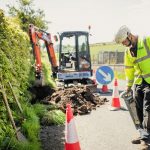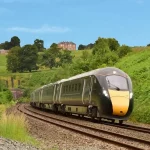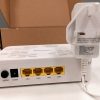Shropshire UK Won’t Achieve Universal Superfast Broadband by 2020
A new report on local economic growth will next week warn Shropshire County Council in England of the “disappointing” news that their goal of providing all homes and businesses in the region with access to “superfast broadband” (30Mbps+) by 2020 is “no longer likely [to] be achieved,” but it should get there eventually.
At present the state aid supported Connecting Shropshire programme, which is supported by the Government’s Broadband Delivery UK scheme, has already signed three contracts to deploy a mix of both fixed line (FTTC / FTTP) and fixed wireless broadband services from several network suppliers, including Openreach (BT) and ISP Airband.
Assuming all goes to plan then those existing contracts should be able to deliver “superfast broadband” coverage to 98% of premises in Shropshire by around the middle of 2020 (here), which is obviously 2% short of where the council expected to be by that stage. Interestingly the new report from Councillor Nic Laurens pegs the completion of the current contracts to an even later date than originally announced of 2021.
Advertisement
Update from Shropshire’s Economic Growth Strategy Report
Using comparative data, the Shropshire Council area currently has approximately 90% of premises connected to superfast broadband, with an expectation that up to 98% could have access to superfast broadband by the end of all current contracts that are expected to complete in 2021.
This projection assumes that all opportunities for extra delivery through contracts are optimised and that there are no further changes from current commercial coverage commitments which remain beyond the control of the Connecting Shropshire’s programme.
The Council’s aspiration, as set out in the Local Broadband Plan in 2016, is to provide all premises with access to superfast broadband. Using existing programme funding and additional contract incentives over the course of our current contracts we expect to realise this aspiration, although it is no longer likely that this will be achieved by 2020.
Whilst this is disappointing, it has always been a recognised risk to the programme, where infrastructure providers change their original commercial commitments. In all cases where commercial commitments change we will continue to lobby the providers and influencers to reconsider these frustrating and impactful decisions.
The report further notes that the original contract with Openreach (BT) helped to extend superfast broadband to an additional 52,453 premises (1,000 more than planned) and a second contract is currently in the process of extending this to another 3,700 premises, which is said to be “behind schedule” but still due to complete by the middle of 2019.
Meanwhile the 3rd contract, which was only signed in July 2017 with fixed wireless ISP Airband, aims to cover over 14,000 premises by the end of the contract in 2020 and today’s update notes that they have so far completed deployment to 6,000 premises.
Apparently Airband has also experienced some “siting and land acquisition challenges … in some areas,” although alternative sites “have been acquired in most cases to retain the momentum of deployment.” The report vaguely indicates that this may have an “implication on specific premises being able to access the network,” but no further detail is offered.
Elsewhere the report notes that some £1.2m of unused grant funds from BDUK could in theory be used to extend rural coverage to an additional 700 premises in the future, while potential fibre optic upgrades to Airband’s wireless network may also be able to facilitate “ultrafast broadband” (100Mbps) speeds.
Advertisement
On top of that a joint bid from Fastershire, Superfast Telford and Connecting Shropshire recently secured £1.498m of funding from DEFRA’s rural broadband scheme, which it’s suggested could be used to cover another 674 premises on top of the above work (expected to commence later in 2018).
Finally, Councillor Nic Laurens said they intended to review how the Government’s new proposals for universal “full fibre” (FTTP/H) coverage by 2033 could impact the county. “Whilst we welcome this long term ‘full fibre’ ambition it should be set within the context of the current infrastructure deployment challenges in a rural county,” said Laurens.
The report is due to be debated at a full council meeting on Thursday next week at 10am (20th September).
Mark is a professional technology writer, IT consultant and computer engineer from Dorset (England), he also founded ISPreview in 1999 and enjoys analysing the latest telecoms and broadband developments. Find me on X (Twitter), Mastodon, Facebook, BlueSky, Threads.net and Linkedin.
« Five ISPs Express Interest in Delivering 10Mbps UK Broadband USO
Virgin Media UK Discount 108Mbps Broadband and Phone to £29 »

















































Comments are closed